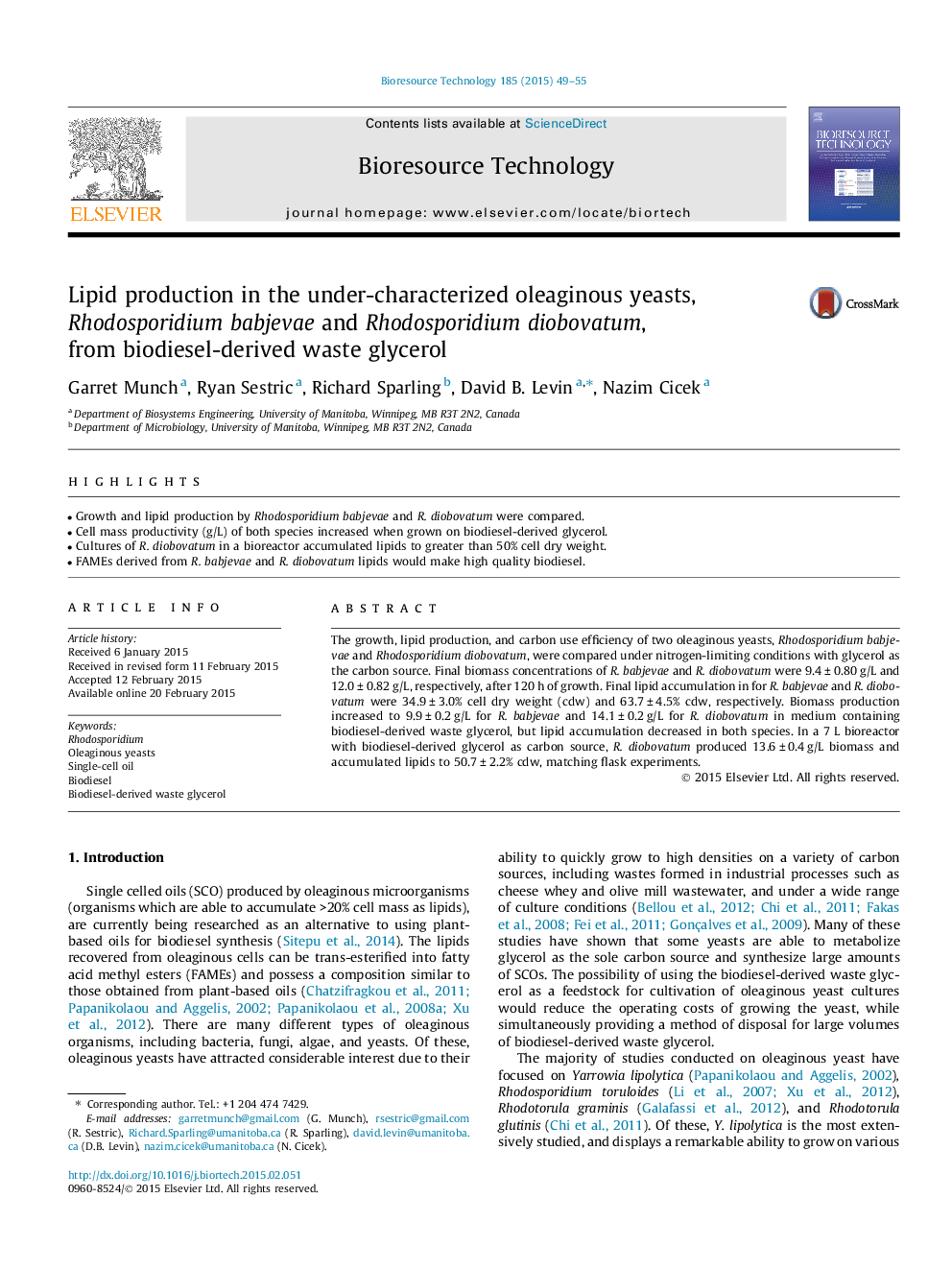| Article ID | Journal | Published Year | Pages | File Type |
|---|---|---|---|---|
| 679830 | Bioresource Technology | 2015 | 7 Pages |
•Growth and lipid production by Rhodosporidium babjevae and R. diobovatum were compared.•Cell mass productivity (g/L) of both species increased when grown on biodiesel-derived glycerol.•Cultures of R. diobovatum in a bioreactor accumulated lipids to greater than 50% cell dry weight.•FAMEs derived from R. babjevae and R. diobovatum lipids would make high quality biodiesel.
The growth, lipid production, and carbon use efficiency of two oleaginous yeasts, Rhodosporidium babjevae and Rhodosporidium diobovatum, were compared under nitrogen-limiting conditions with glycerol as the carbon source. Final biomass concentrations of R. babjevae and R. diobovatum were 9.4 ± 0.80 g/L and 12.0 ± 0.82 g/L, respectively, after 120 h of growth. Final lipid accumulation in for R. babjevae and R. diobovatum were 34.9 ± 3.0% cell dry weight (cdw) and 63.7 ± 4.5% cdw, respectively. Biomass production increased to 9.9 ± 0.2 g/L for R. babjevae and 14.1 ± 0.2 g/L for R. diobovatum in medium containing biodiesel-derived waste glycerol, but lipid accumulation decreased in both species. In a 7 L bioreactor with biodiesel-derived glycerol as carbon source, R. diobovatum produced 13.6 ± 0.4 g/L biomass and accumulated lipids to 50.7 ± 2.2% cdw, matching flask experiments.
